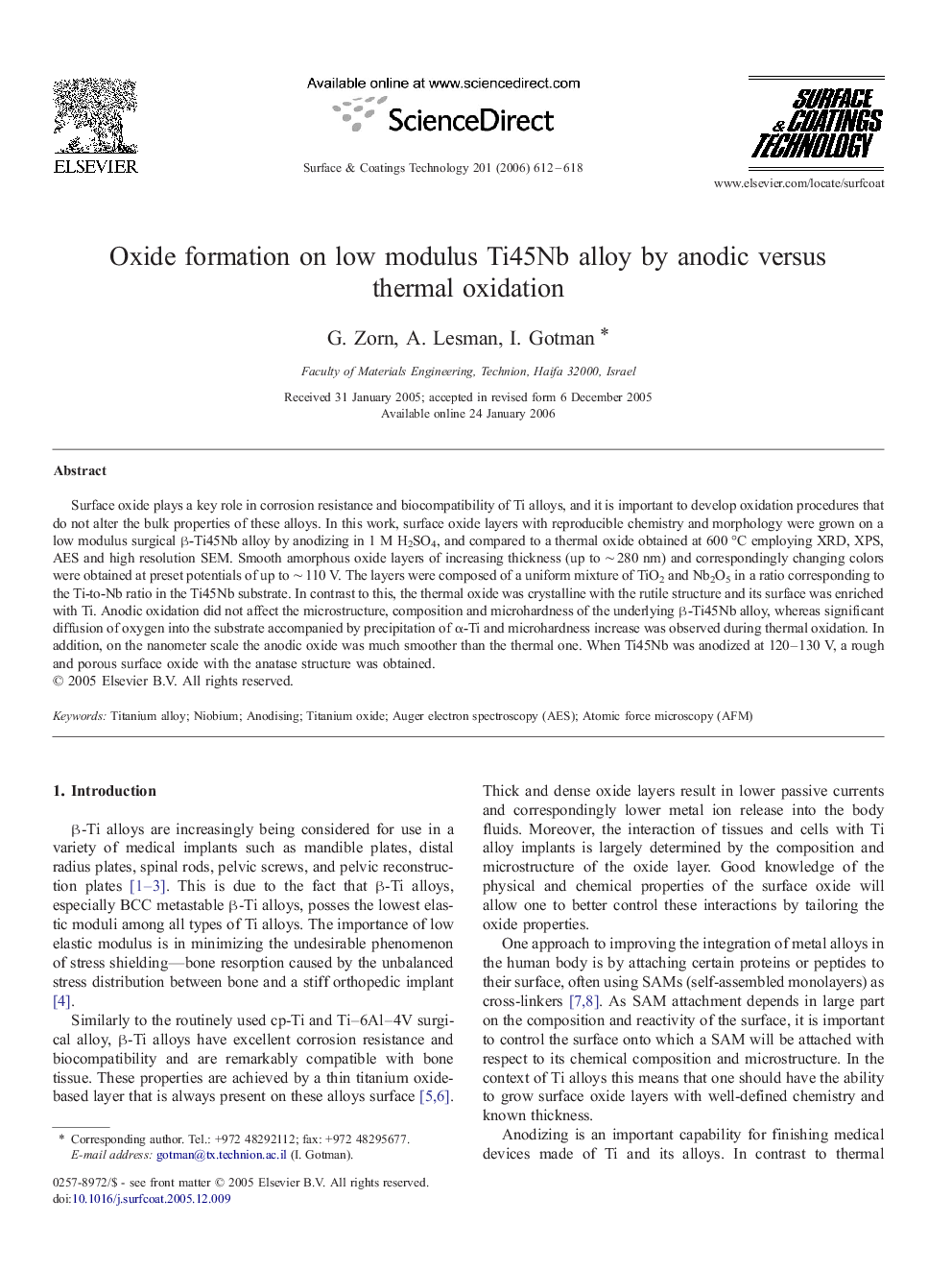| Article ID | Journal | Published Year | Pages | File Type |
|---|---|---|---|---|
| 1662090 | Surface and Coatings Technology | 2006 | 7 Pages |
Abstract
Surface oxide plays a key role in corrosion resistance and biocompatibility of Ti alloys, and it is important to develop oxidation procedures that do not alter the bulk properties of these alloys. In this work, surface oxide layers with reproducible chemistry and morphology were grown on a low modulus surgical β-Ti45Nb alloy by anodizing in 1 M H2SO4, and compared to a thermal oxide obtained at 600 °C employing XRD, XPS, AES and high resolution SEM. Smooth amorphous oxide layers of increasing thickness (up to â¼Â 280 nm) and correspondingly changing colors were obtained at preset potentials of up to â¼Â 110 V. The layers were composed of a uniform mixture of TiO2 and Nb2O5 in a ratio corresponding to the Ti-to-Nb ratio in the Ti45Nb substrate. In contrast to this, the thermal oxide was crystalline with the rutile structure and its surface was enriched with Ti. Anodic oxidation did not affect the microstructure, composition and microhardness of the underlying β-Ti45Nb alloy, whereas significant diffusion of oxygen into the substrate accompanied by precipitation of α-Ti and microhardness increase was observed during thermal oxidation. In addition, on the nanometer scale the anodic oxide was much smoother than the thermal one. When Ti45Nb was anodized at 120-130 V, a rough and porous surface oxide with the anatase structure was obtained.
Keywords
Related Topics
Physical Sciences and Engineering
Materials Science
Nanotechnology
Authors
G. Zorn, A. Lesman, I. Gotman,
